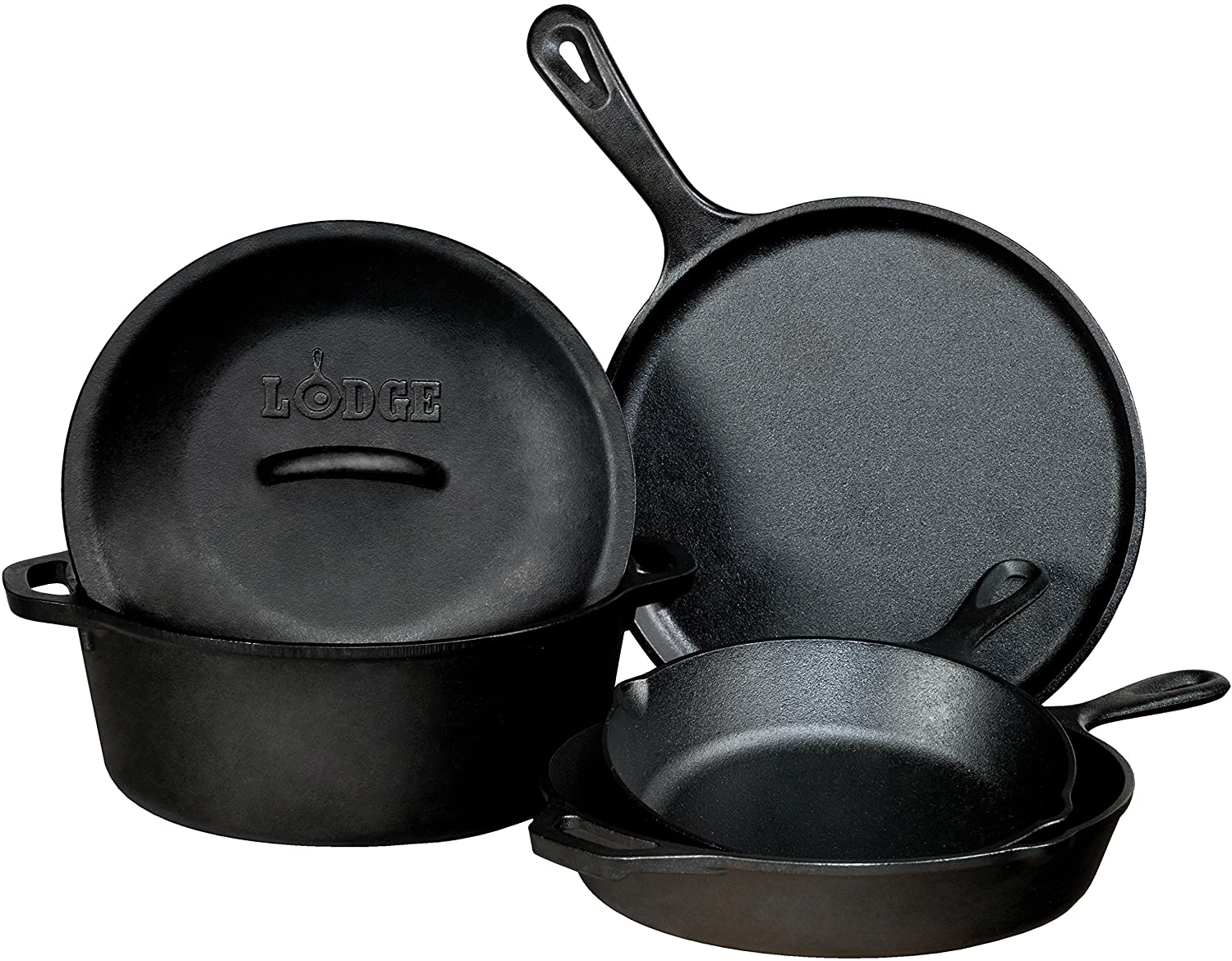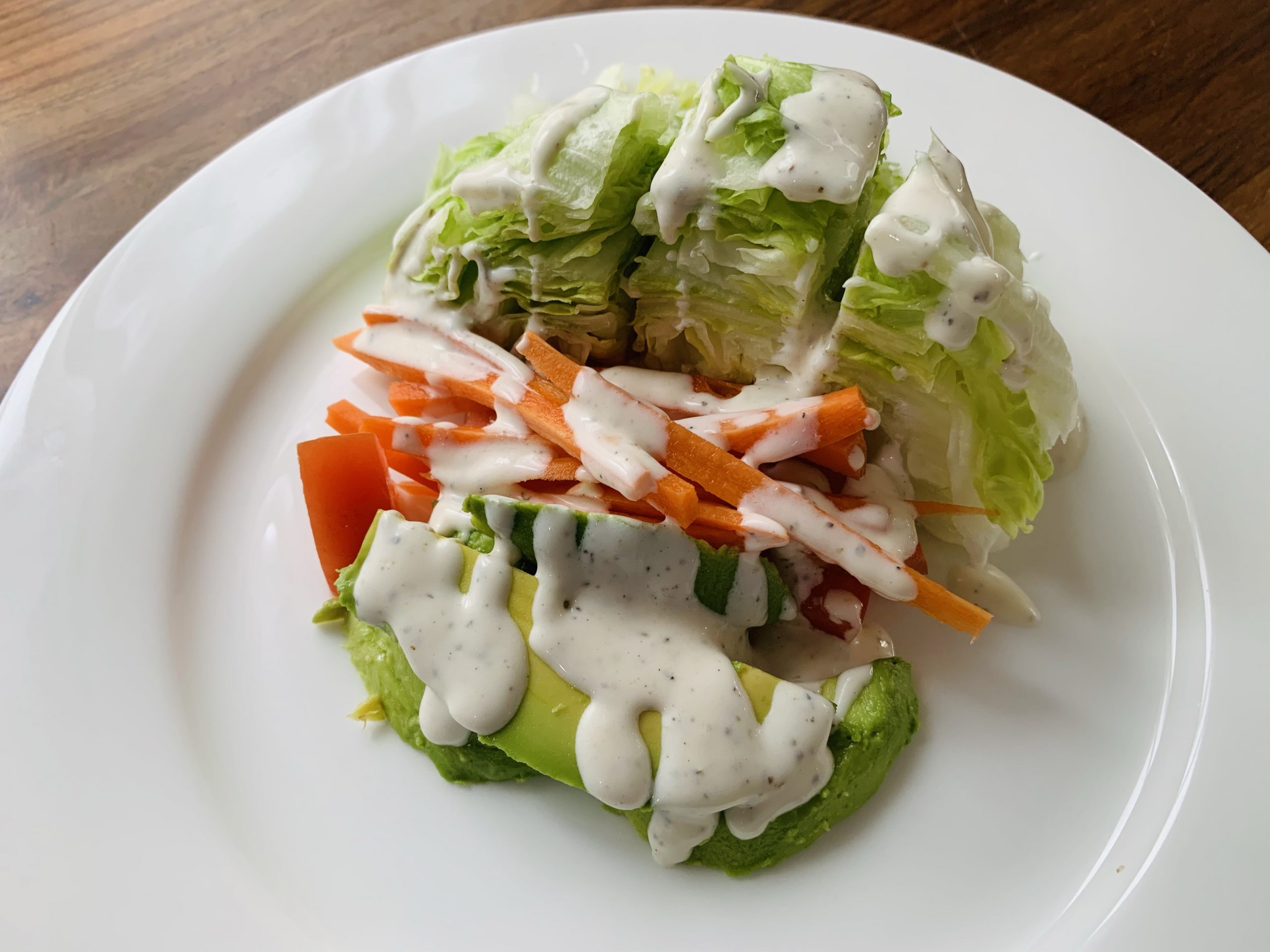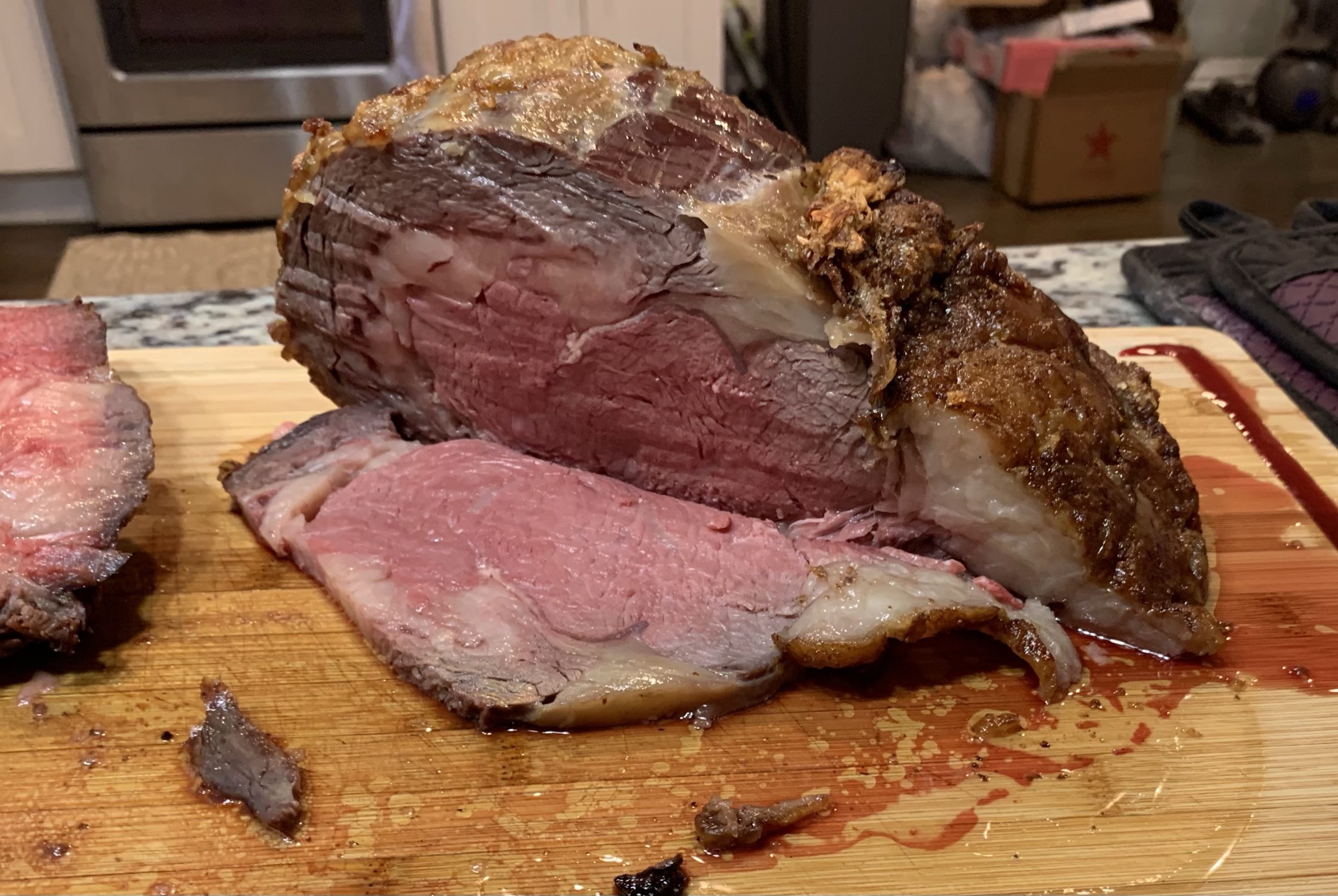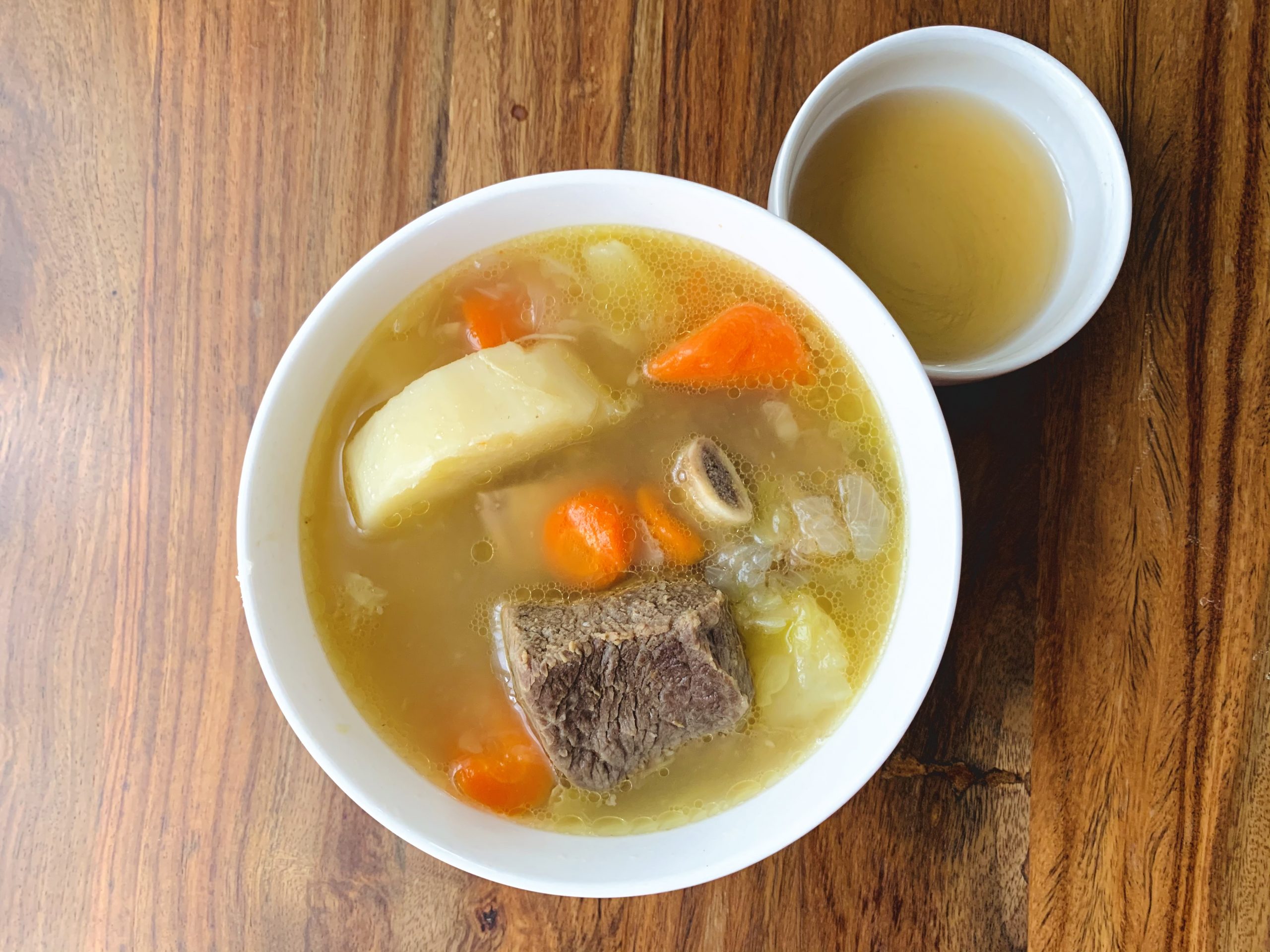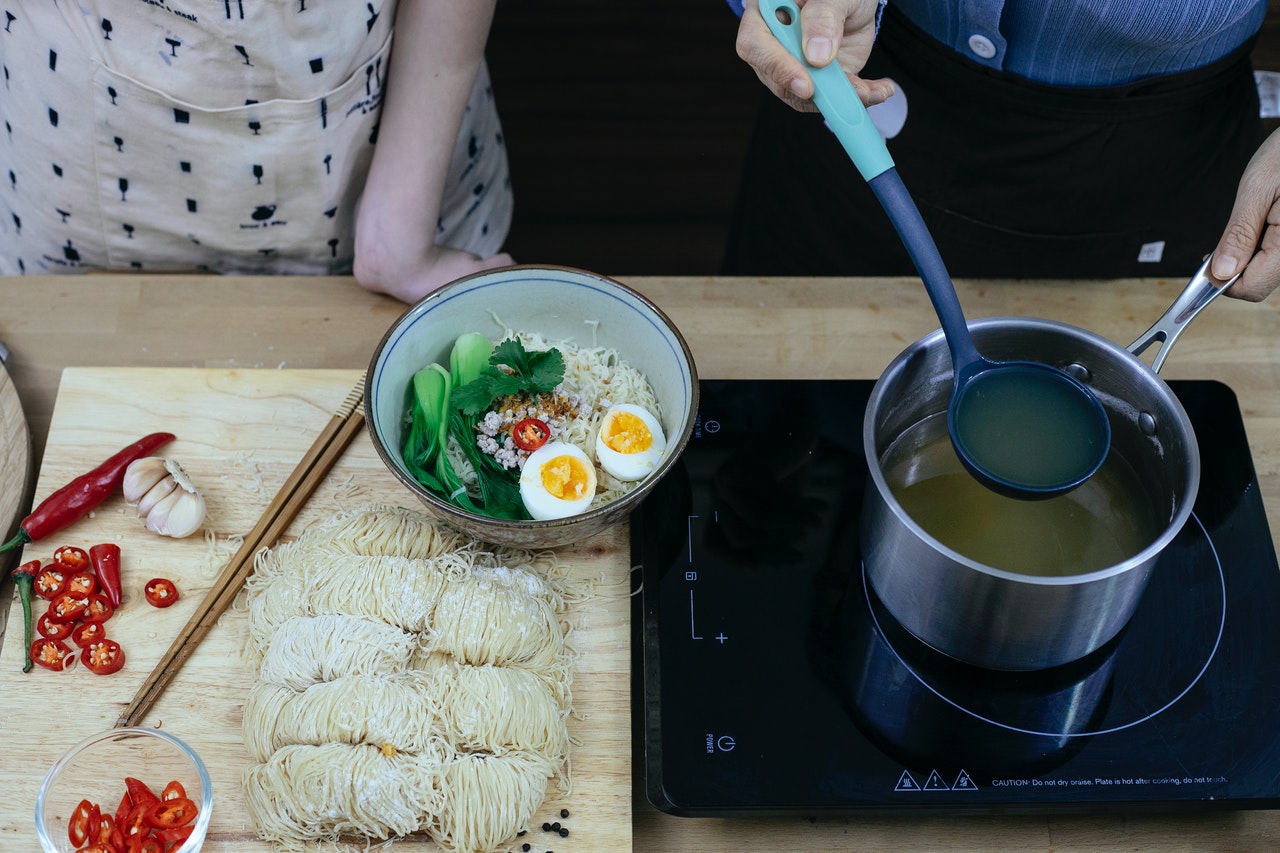Unless you’re a cooking prodigy competing on Master Chef Kids there’s a good chance that your cooking skills materialized somewhere around high school or college when your budding independence decided to take on the task of actually feeding yourself. At that point you were probably using whatever kitchen pans were available at your parents’ place or the cheap set they gifted you from Walmart to use at your dorm. And there’s some likelihood that on your wedding registry you went for the nicest set of Calphalon non-stick cookware that you could zap with your registry gun at Bed Bath and Beyond.
For many it may be by chance that they are introduced to the world of cast iron cooking. Maybe you see a hot dish served out of a cast iron dutch oven at a relatives house during the holidays or camping with friends and someone pulls out a heavy black cast iron skillet. Whatever serendipitous encounter you have with cast iron in your life, count yourself blessed. You’ve just been introduced to one of the most versatile pieces of cookware there is.
Why do I love cast iron cooking?
Cast iron is versatile. You can flip flapjacks on a griddle, shallow or deep fry in a skillet and even slow cook ribs in or bake sour-dough in a dutch oven. Its thick, durable and can withstand high heat (also retain it!) which makes it perfect if you want to use it to sear a steak or put the entire thing in the oven or under a broiler. Did I mention in some cases it can actually act as well as a non-stick pan (we’ll get to that soon)?
An added benefit of cast iron is it is iron and can be used on an induction cooktop, like my Bonsen Portable Induction Cooktop. That means I can setup my breakfast skillet station at the kitchen eating counter and whip up omelets or pancakes right in front of the kids.
Some of the cast iron pans I have at home
- Lodge Pre-Seasoned Cast Iron Griddle With Easy-Grip Handle, 10.5 Inch Black – I use this one for pancakes and grilled cheese; short sides so good to use with a press if needed.
- Lodge Pre-Seasoned Cast Iron Skillet With Assist Handle, 10.25″, Black
– I have 2 of these as this is a staple in my kitchen; taller sides for shallow frying and great for searing steaks; has a drip spout on the side for oil dispensing too.
- Lodge 5-Quart Cast Iron Dutch Oven with Iron Lid
– This is perfect for long braised meats like beef ribs or braised pork-belly; heavy lid and keeps the heat in right where you want it. Also use it open for deep frying.
Cast iron can be intimidating
For whatever reason we know that cast iron can be intimidating for some people. Some of the common questions that come to mind are “how do I take care of cast iron cookware” or “how do I keep my cast iron from rusting”. The idea of rusted cookware does cause some folks to fear cast iron, but I’m here to reassure you, there is nothing to be worried about. You just need to learn the art of what’s called “seasoning” cast iron and what it does to protect your investment. Get that down and you’re on your way to amazing cooking.
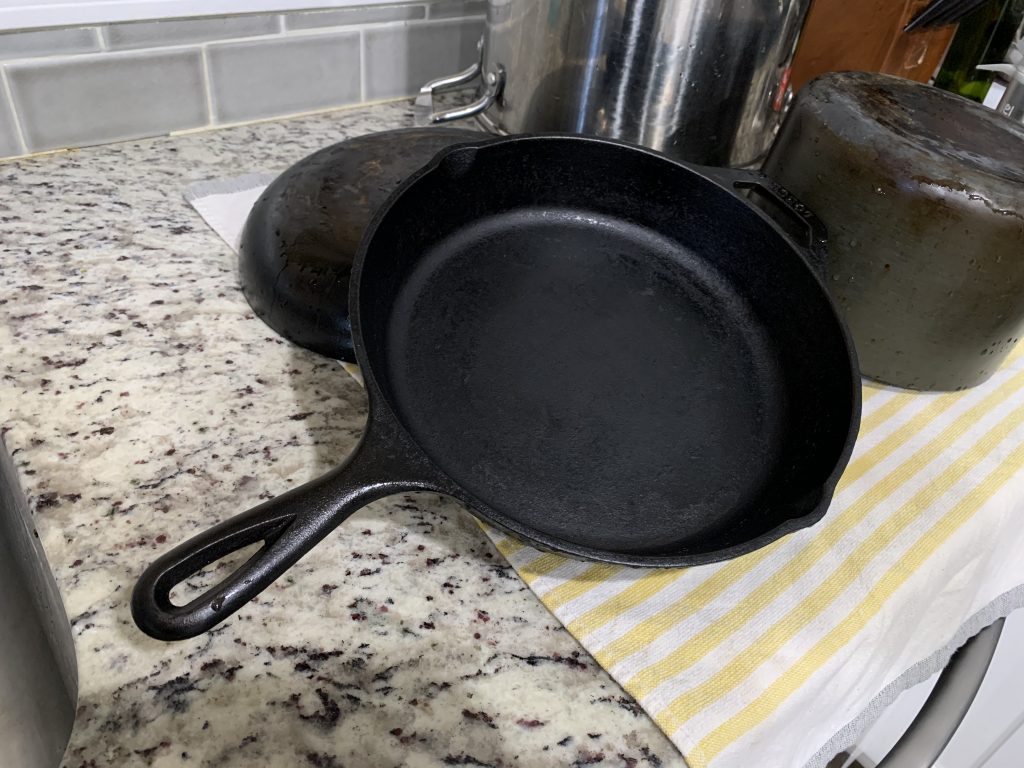
What is seasoning cast iron and what does it do?
Seasoning cast iron cookware involves two basic ingredients: heat and oil. The oil acts as a coating for the iron in your cast iron which protects it from both water and oxygen, the two basic components, when mixed with iron, which make rust. A series of heating treatments on the pan causes the oil to polymerize and carbonize, it which solidifies the protective coating, and also helps make your cookware non-stick.
How to season cast iron cookware
Important note: You may have commonly seen there are cast iron dutch ovens that have an outer, colored enamel such as Le Creuset brand. This method of seasoning is NOT for these types of cookware. There is no risk of rust on the outside of these pieces. This method is for the all black, all iron cookware like that of Lodge brand.
Seasoning cast iron cookware is easy and can be achieved in a few simple steps & ingredients. You’ll need your pan, some paper towels, heat from an oven and oil. I recommend using avocado, corn, canola, or lard in this process, but not olive oil since it has a low smoke point.
- Preheat your oven to 450 degrees.
- Clean your cast iron cookware with warm and soapy water — then dry it immediately! Especially if it’s new and depending on where you get it, it is good to be safe and ensure there is no factory film on your pan before you season. Some cookware come pre-seasoned too which is great and in which case you may not need this process. However, if you’re looking to take control of your cookware, clean it first. It won’t be the last time.
- On your dry cookware, pour about a 1/2 teaspoon of oil in the middle and, with a paper towel, wipe the inside until you cover it with a thin coat of oil. Depending on the size of the cookware you’re seasoning you can add more oil until the inside is covered.
- Next you can take that same paper towel and begin to spread that oil to the outside and bottom of the pan as well. I do the handles too, even though no cooking happens on them and I think they are unlikely to rust. Overall, you are looking for a thin and shiny layer of oil all around.
- When ready, carefully place the cookware in the oven and leave it for about 45 minutes to 1 hour. During this time the oil will dry and create a polymer like film on the pan. It will also heat the oil past its smoke point which will carbonize the oil and give you that nice non-stick coating.
- After about an hour turn off your oven. You can either let the cookware cool for a bit before removing, or CAREFULLY remove them with oven mitts and let them cool on your stovetop.
How do I care for my cookware after I season it?
You only need to do this process maybe 1-2 times per year. Since I can be a heavy user, I personally like to do this every other month to keep a good coat on my cookware.
Depending on what you cook and the kind of mess you make, cleaning your cookware is easy too. Sometimes on lighter foods you can simply run hot water over the pan and wipe clean with a paper towel. It should go without saying, but I’ll say it anyway, don’t put cast iron cookware in the dishwasher.
I also want to make one thing clear: you can use soap on your cast iron cookware. There seems to be this urban legend that soap is the enemy of cast iron, when in reality, it’s probably not properly drying your pans after you wash them which can cause them to deteriorate or rust. A good scrub brush, warm water and soap are perfectly good cleaning agents for your cookware. Just make sure to dry well and immediately! No soaking!
What to do about rust you ask? Well, occasionally you may see rust develop if you’re not keeping up with seasonings or drying well after a wash. All you need to do is take some steel wool and warm water and give it a scrub until the layer of rust is gone. Cast iron cookware is made of thick iron and is built to last, so don’t think you’re making your pan any weaker by scrubbing off a layer of rust. Simply re-season your pan and you’re good go.
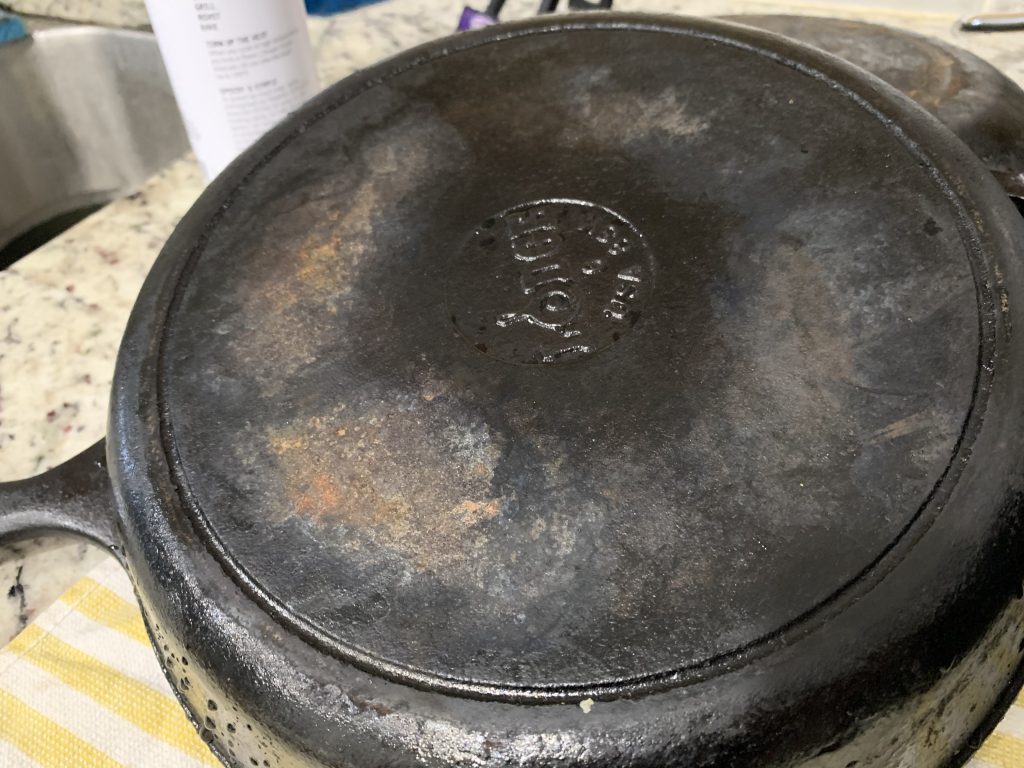
Cast iron cookware is not for everything
Now that you have a functioning cast iron pot or pan you should know there are some limits to what you can or should do if you want to maintain a good layer of seasoning, and that primarily is deglazing. Using an acid like vinegar or wine to deglaze the bottom of your pan can be tempting especially after caramelizing a steak or vegetables. However, keep in mind that technique can chip away at your non-stick coating and ultimately require you to re-season the inside of your pan. I have heard that certain acidic foods like a tomato sauce could do the same thing, but I would be less concerned at those low acidity levels.
There you go. Now you have everything you need to know to manage your own set of cast iron cookware. Now go sear some steaks!
Bon appetit!
My favorite cast iron pans mentioned above

